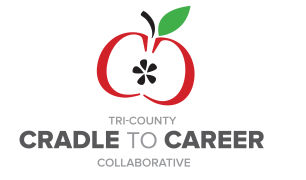Setting the stage for quality, learning, and improvement in Tri-County, SC
“How do we get better at what we do?”
For many of us in the social sector, this question is often on our minds. Here at Root Cause, we often ask ourselves, “how do we get better at showing up for our partners?” For direct service providers, this might take the form of, “how do we get better at utilizing our resources to serve the needs of program participants?” or “how do we improve communication and morale amongst staff to improve the quality of services we deliver?”
Though we might recognize an area for improvement within our organization, it’s often difficult to know where to start, particularly when the challenge feels large or tied to the way things have always been done. Where do we even begin? Enter Continuous Quality Improvement (CQI).
What is CQI, and how does it work?
Continuous Quality Improvement (CQI) is a well-established management philosophy and process in which an organization strives to improve the quality of its services or products on an ongoing basis using data to inform decisions. In the past 50 years, the practice of CQI has been instrumental in improving products and services in various industries, including manufacturing and healthcare. CQI also can be applied to social service programs working to improve outcomes for people, from a healthy birth and a quality education to a well-paying job and a healthy and secure aging. At its core, CQI is a process that asks the question, “how can we get better at getting better?”
Root Cause’s holistic approach to CQI helps strengthen the capacity of social service providers by enabling organizations to clearly define their desired results and the path to achieve them, use the best available evidence of what works, understand the barriers that hinder progress, and use real-time data to decide what actions to take. The goal of this process is for social service providers to be able to strengthen outcomes for the people they serve by improving program quality and participant experience.
How do we define quality to begin with?
Quality can refer to so many aspects of a social service program or organization. Yet, without a common understanding of what “quality” means, it’s hard to determine exactly where to apply an improvement process. In building our CQI practice, Root Cause drew upon research and experience to articulate six core domains that are critical to program quality in the context of programs serving children and their families.
1. Use of Evidence
2. Accessibility
3. Trauma-Informed Approach
4. Staff Support and Performance
5. Referrals and Partnership Management
6. Family Engagement
Read more about these domains of quality via our blog post What is Quality?
CQI in the Tri-County Region of South Carolina
In part one of this series, we shared a blog post about how the Tri-County Cradle to Career Collaborative (TCCC) enlisted Root Cause to help bring CQI to direct-service providers serving children ages 0-8 and their families in the Tri-County region of South Carolina. Root Cause and TCCC teamed up to identify and cultivate relationships with potential programs who would be a good fit for CQI coaching, and ultimately invited eight programs to join a cohort to build their own CQI practice.
In joining the cohort, these eight programs signed on to engage in a hands-on quality improvement process with a CQI coach during a 12-15-month period. Each program agreed to complete a baseline CQI assessment, work with their coach to develop a Continuous Improvement Plan (CIP), and implement their CIP in order to select and strengthen capacity areas. These capacity areas included the six domains of program quality above, as well as three aspects of performance measurement: Culture, Frameworks, and Systems. Participating programs are seeking to increase their capacity to collect, analyze and use data in programmatic decision-making, leading to improved outcomes for children and families. They also are acting as ambassadors for a culture of continuous improvement within the broader provider community that will ultimately benefit families and children served.
A Shared Vision of Quality
For the eight programs in the TCCC CQI Initiative cohort, quality takes many different forms. At the beginning of their CQI coaching, each program drafted a “shared vision of quality” that described the highest and best quality level that they can imagine for their program, given their resource levels.
For one program that provides parent-child interaction therapeutic services, quality means strengthening cultural competency in order to serve more families and children from Charleston’s non-white communities.
For a residential program, quality includes “engaging our clients in co-designing the plan for the services they receive, while supporting connection with their families through visitation and decision-making where possible.”
Another program that provides school-based services, articulates that “we know our program is high quality when we understand the needs of each school’s population and make ongoing efforts to maximize our accessibility so that students can readily access services to support them and their families both in and out of school.”
Each program’s vision of quality goes further to articulate what use of evidence, accessibility, a trauma-informed approach, and the other CQI quality areas would look like according to the standard of quality that they’ve set for themselves. These quality statements serve as a guiding beacon for programs to refer back to, and all CQI work is oriented to realizing these visions of quality. We call them “shared” visions of quality because it’s important that all team members have participated in creating the quality statement and have bought into the vision of quality.
Has your organization implemented a CQI-like process? What does quality look like in your organization?

